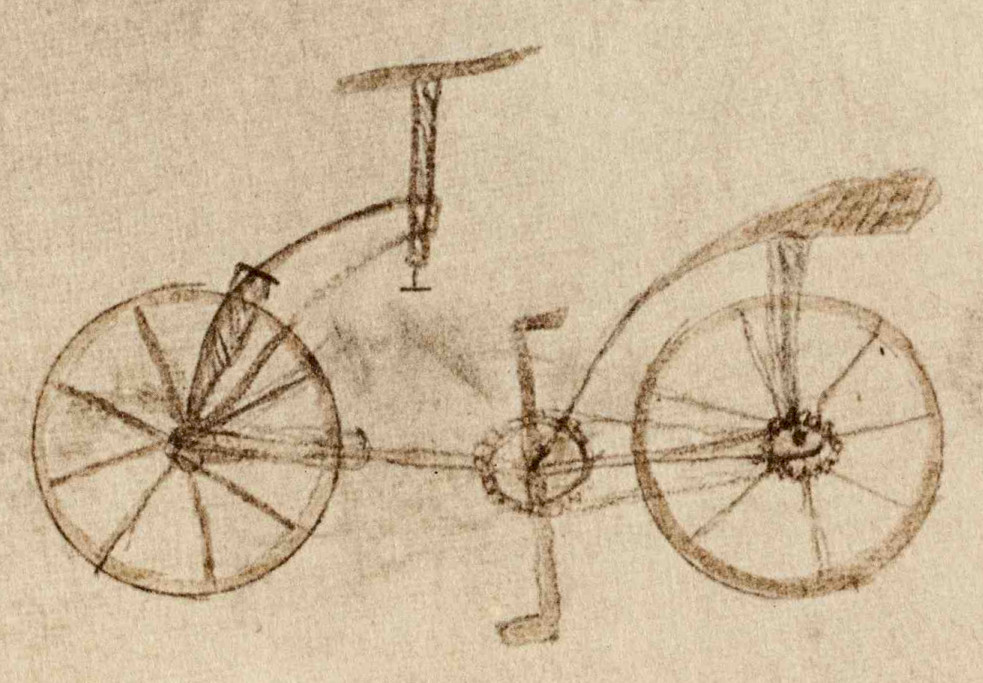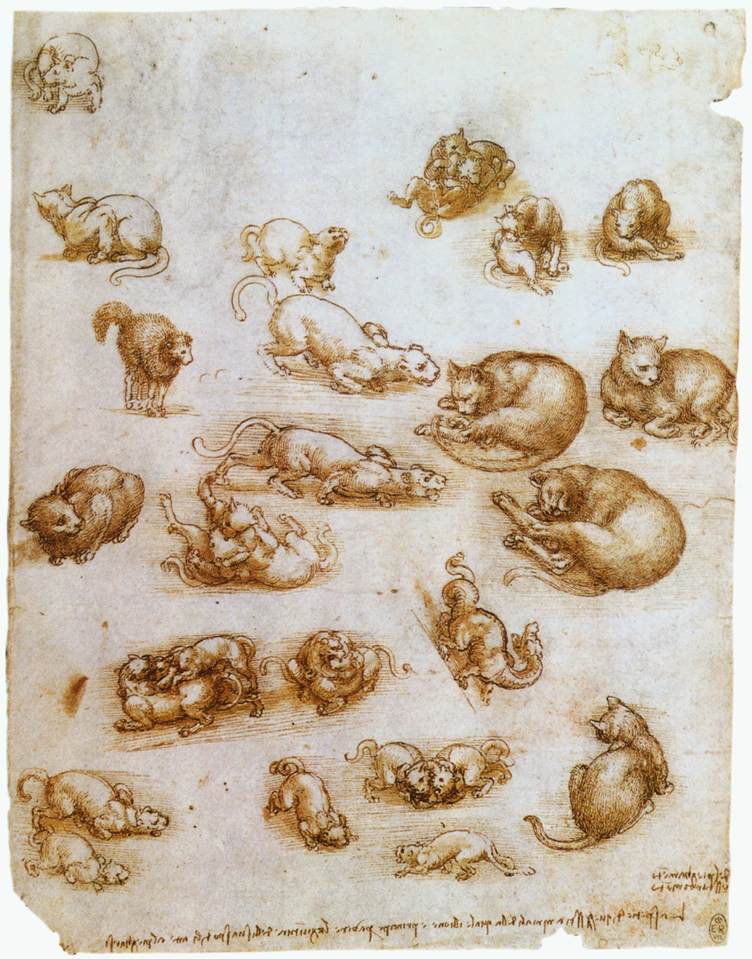
“Ars longa, vita brevis. Art is long, life is short”- Hippocrates
“Life, if well spent, is long” – Leonardo da Vinci
By Nina Heyn -Your Culture Scout
Imagine a designer whose technical designs remain mostly in the blueprint but never go into technical trials or a production line. Imagine a scientist who has to hide his interest in anatomical research because he could be imprisoned on religious grounds. Imagine an employee whose boss gets imprisoned which severely limits any opportunities of research funding or even any basic salary. And finally, imagine an artist who is by far the most accomplished draughtsman and oil painter of anyone alive but whose artistic legacy is barely a dozen or so paintings, often unfinished, most of them damaged.
Leonardo da Vinci was not supposed to achieve any success or prominence. Born a bastard son of a notary, he did not get any formal education, he did not have the right to his father’s name or his inheritance, and he had no entry into any Florentine professional guilds that would allow him to be a doctor or a lawyer. And yet, when he was dying after a lifetime of being a chief engineer or an architect to Italian princes, the King of France was at his bedside. Everything that Leonardo achieved in between, he achieved through his incredible talent, an insatiable intellectual pursuit, and an imagination that reached out across centuries into the future. Till this day he stands as a giant of human thought, hardly surpassed by anyone who came before or after. And this is what we celebrate today.
Leonardo died 500 years ago in 1519 and in his honor, all year long, many museums in Europe will hold major exhibitions of his work. The Renaissance genius does not need introduction anywhere in the world but most of his work is either mostly kept out of sight (many of his drawings and notebooks are in private collections) and his dozen or so paintings are dispersed in various museums. Such is a hunger for anything da Vinci that when a painting was recently confirmed as at least partially painted by da Vinci, the Salvator Mundi painting sold in 2017 at the world record price at Christie’s auction. It was acquired by a Saudi prince and planned for display at the Louvre Abu Dhabi. In 1994 Bill Gates purchased for a princely sum of $30M one of Leonardo’s famous notebooks, re-named it Codex Leicester, and since then the notebook has been lent out for scientific research and exhibition (most recently at the Uffizi in Florence). And such is an interest in Leonardo that he is always present in popular culture – millions throng every year around the Mona Lisa at the Louvre, his name used for commercial products from a travel booking system to baby videos, and his countless biographies range from BBC documentaries to a quite entertaining popular TV series
Da Vinci’s Demons
Leonardo’s years spent in Milan over two extended periods were his most productive ones. He painted two versions of the Virgin of the Rocks, Lady with an Ermine, The Last Supper fresco at a local church, Leda and the Swan (now lost) and so called Burlington House Cartoon (a detailed preparatory drawing of Mary, Christ, St. Anne and the infant St. John, now at the London National Gallery). As a tireless researcher and engineer, he filled notebooks and scraps of paper with his design ideas for what subsequent inventors will call a bicycle, an automobile, a tank, a diving mask, a plane, a parachute, a reflecting telescope, and a submarine.
 Leonardo da Vinci, Codex Atlanticus. Picture credit: Wikimedia Commons public domain
Leonardo da Vinci, Codex Atlanticus. Picture credit: Wikimedia Commons public domain
Not surprisingly, Milan is the hot center of numerous celebratory exhibitions in 2019. In January, Santa Maria delle Grazie, the site of The Last Supper, is displaying the fresco’s preparatory drawings by the master and his pupils. In May, the newly restored Sala delle Asse at the Sforza Castle opens its doors to showcase da Vinci’s ceiling decorations and a collection of his nature drawings. All year round, Pinacoteca Ambrosiana is planning several consecutive displays of pages from the Codex Atlanticus notebook: war machines, hydraulic lifts, textile machines. Also for an entire year, Palazzo Reale is displaying a rare loan from the Vatican. It is a tapestry featuring a copy of the Last Supper in silk embroidery that was commissioned by Leonardo’s patron, the king Francis I. Between April- June 2019, the Stelline Foundation will show da Vinci’s influence in contemporary art on artists such as Anish Kapoor, Wang Guangxi, Yue Minjun and Nicola Samori.
 Da Vinci -Study sheet with cats, dragon and other animals (1513-15), Royal Library Windsor Castle. Picture credit: Wikimedia Commons public domain
Da Vinci -Study sheet with cats, dragon and other animals (1513-15), Royal Library Windsor Castle. Picture credit: Wikimedia Commons public domain
Since the other two major repositories of Leonardo’s work are Great Britain and France, both countries are planning world-class exhibitions this year. The UK is mounting a traveling exhibition Leonardo da Vinci: A Life in Drawing that will start in February with a presentation of 12 drawings each in 12 locations throughout Britain. This exhibition will then be moved to The Queen’s Gallery at the Buckingham Palace for the largest display of da Vinci works in decades when the total 200 of his works go on display from May 24-Oct. 13. And finally a portion of the exhibition will move to Scotland till March 15, 2012.
The Louvre is an obvious destination for da Vinci’s work considering the artist spent the last three years of life at the court of the French king Francois I, leaving behind his notebooks, drawings and paintings that were purchased by the king, and have stayed in France as a national treasure ever since. The museum is planning a Fall exhibition of a number of paintings. The list of the artworks is yet to be announced, but it will presumably include the ones in the Louvre’s possession: Mona Lisa, the French version of The Virgin of the Rocks, The Virgin with the Child and St. Anne, St. John the Baptist, La Belle Ferronnière (currently at Louvre Abu Dhabi), and possibly Bacchus and Salvator Mundi. Da Vinci’s sole authorship of the last two paintings has been contested by some historians and art critics. However, there is certainly enough beauty and style in them that would suggest the master’s hand even if the exact history is now lost. After all, there are many other paintings that are attributed to Leonardo and known to have been overpainted or changed by other artists.
Moreover, there are paintings generally confirmed, e.g. Leonardo’s Madonnas and his four female portraits, to attest to his pioneering a completely different approach to portraiture. His paintings are incredibly personal – so much different from the preceding style of presenting human faces as information or symbols rather than the way they were painted from then on – as real psychological portraits. All of the subsequent European painters, from Goya to Bacon and from Rembrandt to Hockney, owe something to Da Vinci’s approach of showing a human face as an individualized, psychological portrait.
We live in the contemporary world of dumbing down any information (in media or at schools), in the increasing specialization of knowledge (the bigger the corporation, the narrower job descriptions) and a pre-determination of professional outcomes (they say the better preschool you got into, the bigger a chance you will have for a six figure salary). It’s a good idea then to take a look at the man whose incredible versatility and independence of thought, despite his lack of any formal education or financial stability, still inspires us 500 years after his passing.
“Da Vinci generated an endless stream of art, inventions, tools and ideas that produced real wealth, making it possible for people to make money from positive instead of negative” –comments Catherine Austin Fitts, whose goal for the Solari Report is to provide the widest information and inspiration for people who want to live independently and control their destiny.
For this reason, we intend to celebrate da Vinci’s legacy and the spirit of constant intellectual pursuit in a series of Solari Travel Specials and “Food for the Soul” postings throughout 2019. Watch this space for them all year round. And if you have a chance to be near any of the museums that will showcase da Vinci’s works, check them out!
